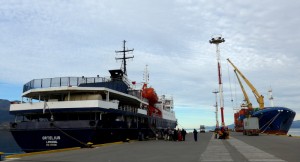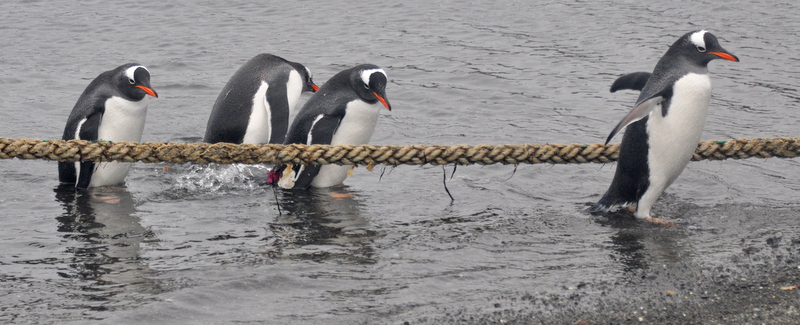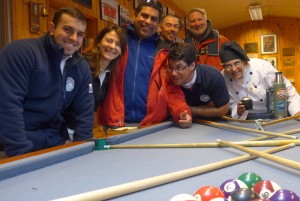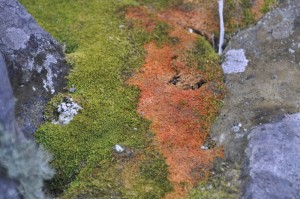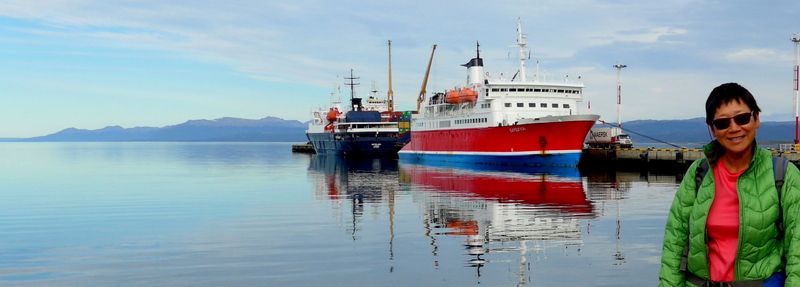
After my 32-day Ross Sea Antarctica Odyssey from Bluff, New Zealand to Ushuaia, Argentina, I continue my journey on board MV Ortelius to Cape Verde via remote islands in Antarctic and South Atlantic including South Shetlands, South Orkney, South Sandwich, Bouvet, Gough, Tristan de Cunha, St Helena and Ascension
Life on MV Ortelius
Life on a small ship for 36 days can be amusing or boring with 66 strangers confined in limited space. We move between our cabin and the lecture room (Level 3), bow and restaurant (Level 4), bar/lounge and deck(Level 6), bridge and open deck (Level 7). We have breakfast, lunch and dinner in a mess-like restaurant; lectures, films and movies in a windowless lecture room with a church-feel setting and daily recaps and short briefings at the bar with straight-back benches. Drinks are affordable and we have happy hours from 4pm.
The bridge is the location for the birders and anyone interested in checking the progress of the ship. The bow and open decks are the best places for fresh air and exercise, watching wildlife, sunrise and sunset, and star-gazing at night. The bar is inevitably the only and most popular place for hang-out: drinking, socialising, knitting, doing crossword, reading, photo editing, writing, checking emails and playing card games.
The South and Atlantic Oceans are known for treacherous waters, swells and freak waves. Ortelius, a sturdy ship, is behaving very well in the waves. During the long rough sea days, the best place to be is on the bridge, watching the endless series of waves rolling on towards the bow from the open ocean.
Day 1(March 24, Tuesday):Ushuaia, Argentina 54° 49’ S/ 068° 18’ W; Weather +21°C, sunshine, calm; 530nm to South Shetland Islands
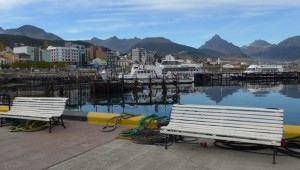 |
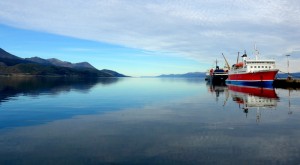 |
All passengers are requested to board MV Ortelius between 4 and 5pm. In order to upload as many pictures as possible on my 32-day Antarctica Odyssey trip to my website, I work feverishly from 8am to 4pm and get 75% of the task done before leaving for the port.
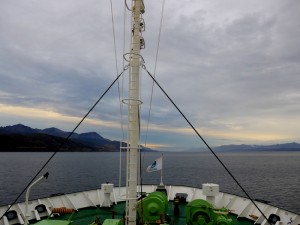 |
Upon arrival at the gangway at 4:30pm, Dmitri, a naturalist on the previous voyage and the crew greet me. Hotel Manager Robert hands me the key for Cabin 447. Everything looks familiar: the only difference is that I have a cabin by myself.
As soon as all passengers have put their luggage down, they have to attend a compulsory briefing by Robert who explains the layout of the ship and daily routine including meal times, WiFi and webmail. Then we have a mandatory briefing on ‘Safety at Sea’ and ‘Abandon Ship’.
Around 6:30pm, the ship starts moving and some passengers stay on deck to watch it heading to the Beagle Channel. At 7pm, we assemble at the bar to meet Captain Tuomo Leskinen and the expedition staff namely Jan Belgers (Expedition Leader), Brent Houston, (Assistant Expedition Leader), Adam Garde (geologist), Victoria Salem (historian), Bob Brown & Dmitri Banin (naturalists), Christian Savigny (bird expert) and our doctor, Lisa van Turenhout.
There are 67 passengers from 21 countries. The Americans form the largest group (29 in total). Apparently one of the travel clubs has negotiated with Oceanwide Expeditions to include a visit to Bouvetøya, the world’s most remote island on this journey. A similar voyage was made with a successful landing in 2006. As a result, 40 passengers come from the Travel Century Club (TCC), the Most Travel People (MTP) and The Best Travel (TBT).
I am hungry as I have not eaten since breakfast. After a nice dinner, I spend the evening by myself in my cool and quiet cabin. The sea is calm and I sleep like a baby. (D-chicken)
Day 2 (March 25 Wednesday): Drake Passage- Noon GPS position 56° 50’ S / 064° 47’ W; Weather +7°C; Wind SE5; Sea Condition 4; 2 lectures
The sea remains calm most of the day– not like the Drake Passage I first crossed in 1999. It is sunny and not windy. I go to the bridge a couple of times to enjoy the soothing sight of the Southern Ocean.
Jan gives us a wake-up call through the PA system at 7:30am. As usual, breakfast is served from 8 to 9am. At 10:30am, I attend the first lecture on this voyage delivered by Bob on ‘A Wing and a Prayer: Life of the Seabirds‘. He gives a lot of information on seabirds common in the polar regions namely albatrosses, skuas, petrel, shearbills, shearwaters, prions, auks and shags. It’s a timely revision on the birds’ wingspans, their adaptations to a life on the ocean wave, how long they can spend in the air, how far they fly to feed and how they only need to come to land to nest and raise their young.
In the afternoon, I collect a pair of gumboots before attending another talk by Dmitri on ‘Whales of Antarctica’. The information is familiar- I must have attended the same lecture before!
At 6:30pm, we have our first recap. I am delighted when Jan shows us the weather chart and the route map on the TV screen. I like this arrangement and consider it an improvement: Don, the previous expedition leader did not conduct daily recap or have the weather forecast programme in hand. Then Christian shows us photos of 16 types of seabirds spotted since leaving Ushuaia!
In the evening, I watch a short documentary made by John Irving in 1929 on his journey round Cape Horn on Peking, a square-rigged sailing ship. It’s the second time I watch it. As I am more accustomed to the strong accent, I can follow his monotone commentary.
The sea rolls more as we approach to the Antarctic Convergence. I do not sleep well tonight. (L- beef goulash and rice; D- pan-fried hake and couscous!)
Day 3 (March 26, Thursday): Drake Passage- Noon GPS position 60° 48’ S / 060° 54’ W; Weather 4°C, overcast; Wind W6; Sea Condition 5; 2 lectures
As usual the weather changes all the time. It is fine in the morning, gets a bit foggy in late afternoon and starts to rain. We have to attend a compulsory lecture on travel in the Antarctica and learn the rationale behind the requirement to vacuum our outer clothing, bags etc to prevent accidental introduction of alien and invasive species to the continent. Next, we have our bags, outer jacket and pants vacuumed.
After lunch we have a briefing on the International Association of Antarctica Tour Operators’ (IAATO) code of practice for visitors to Antarctica, followed by one on the use of zodiacs. At 3:30pm, I attend Victory’s lecture on ‘An Introduction to Antarctica‘ which touches on every aspect including the geography, history of discovery and exploration, tourism, wildlife, flora and fauna and threats to the continent. She speaks loudly and fast thus piling in lots of information.
At the recap, Jan briefs us on our first landing on King George Island. Victoria reminds us of the first sightings of Antarctica and the South Shetland Islands by British explorer William Smith in 1819 and later Edward Bransfield. Dmitri tells us how to distinguish between the ‘Wandering’ and ‘Royal’ albatrosses.
I watch an interesting BBC documentary tonight ‘Antarctica: of Ice and Man‘ which stresses the uniqueness of the White Continent and tells the history of discovery by explorers, tourism development when early tourists could cuddle penguins and how the continent is now kept for scientific research. The sea remains calm and quiet. I have a good sleep. (L-stir-fry vegetables; D- chicken)
Day 4 (March 27, Friday): King George Island, South Shetland Islands – Noon GPS position 62°12’ S / 058° 53’ W; Weather 3°C, overcast; Wind W6; Sea condition 4; 1st Landing – Bellinghausen Station & 2nd Landing – Artigas Station; 430nm to South Orkney Islands
We have a busy day with two landings. I go to the bridge before breakfast to watch Ortelius approaching the bay at the southwestern end of the King George Island named after King George III. It is the largest island (approximately 95km long and 25km wide with an area of 1,150 km²) of the South Shetland Islands. The island was claimed for Britain in 1819 and formally annexed as part of the Falkland Islands dependencies in 1908. Chile and Argentina also claimed it in 1940 and 1943 respectively. Eleven countries have set up research stations on the island including China’s Great Wall Station, Russia’s Bellinghausen Stations and Chile’s Frei Station. A small number of tourists fly here from South America in order to avoid the dreadful Drake Passage.
At 8am, Jan gives us a pre-landing briefing at the bar reminding us to warmly dressed. Though the temperature is +3° C, it feels much colder owing to the wind. I am ferried ashore in zodiac and join the first group to visit the Russian Bellingshausen station. A small group of curious Gentoo penguins and a lone Brown skua greet us at the landing site.
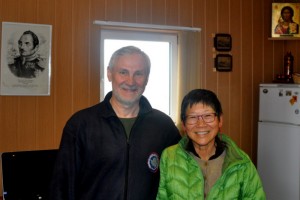 |
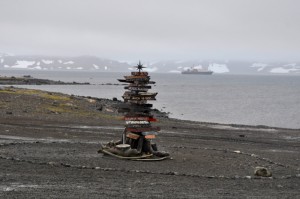 |
We head to the common room where the station chief greets us. Russia has five stations in the continent each conducting different fields of research. This station has received some 600 visitors this season and we are the last group. He has spent a year here and will be returning to St Petersburg next month. Most of the researchers come in the summer and only a dozen people winter over here.
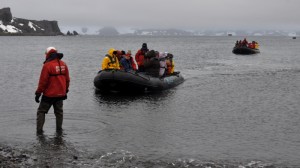 |
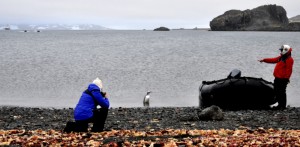 |
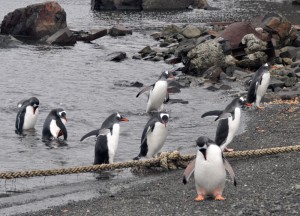 |
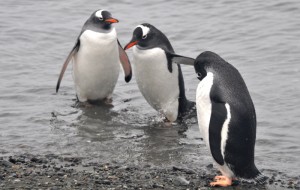 |
I walk to the village-style Trinity Church located at a nearby hilltop which has a permanent priest. Built in 2004 in northern Russia from local timber, it was dismantled, sailed from Kaliningrad, and re-erected at Bellingshausen. The panoramic view of the bay even in a gray day is fantastic.
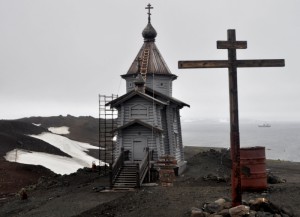 |
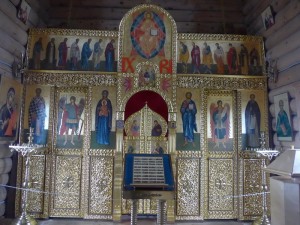 |
I spend an hour wandering around the beach watching hundreds of penguins jumping in and out of water. Most of the them are juvenile and will soon leave for the sea or die as they are not strong enough to survive the harsh winter. I am back on the ship at 11:30am.
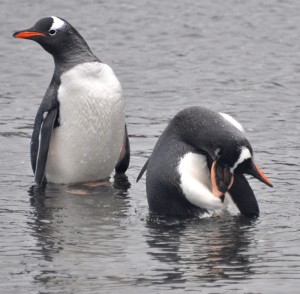 |
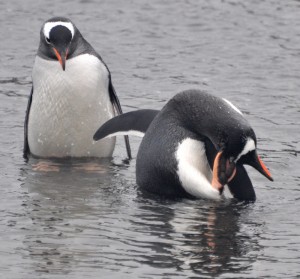 |
We sail during lunch. By 2 pm, we are ready to go ashore to visit the Uruguay Artigas Station manned by a team of nine officers on secondment from the air force, army and navy. These officers winter over for maintenance purpose. In the summer, as many as 70 scientists may be working here. I see for the first time a stream with running water into the Bransfield Strait!
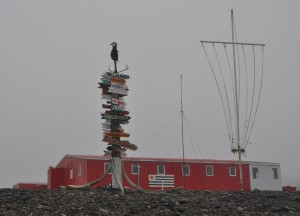 |
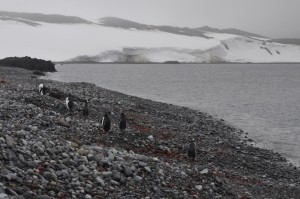 |
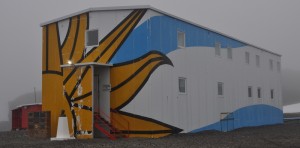 |
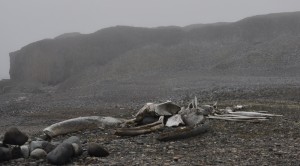 |
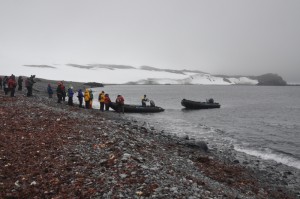 |
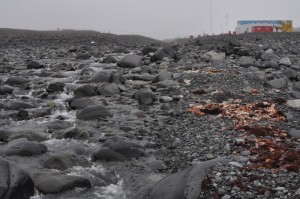 |
The Uruguayans are most hospitable and welcoming. We have freshly baked bread, cake and pastries with local tea. They take us on a guided tour and see the main block with residential quarter and research facilities for scientists. Well we are the first, last and only tourist guests to the station this season. I am back on the boat around 3:30pm.
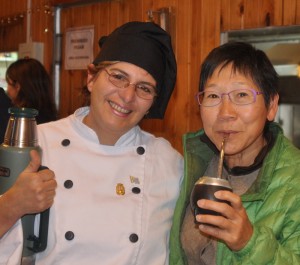 |
|
|
|
We have a great sunset with purple pinkish clouds.
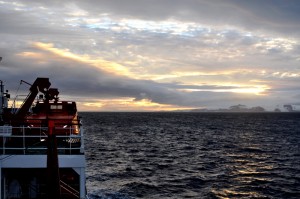 |
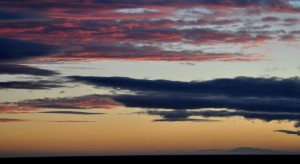 |
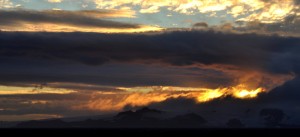 |
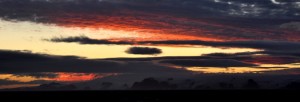 |
We have a great sunset with purple pinkish clouds. The evening entertainment is a BBC documentary ‘Penguin Post Office‘ which is about tourism in Antarctic in generally and Port Lockroy and its Gentoo penguins in particular. It should have been shown during the Antarctica Odyssey! (L- pasta; D- loin of lamb)
Day 5 (March 28, Saturday): At sea – Noon GPS position 60°58 S / 052°09 W; Weather 2°C, sunshine; Wind SSW6; Sea 5; 1 lecture
Today is a ‘whale day‘ as we see lots of whales. I feel lazy and do not want to get out of bed. The announcement that ‘Elephant Island might be visible behind clouds on the starboard side’ does the trick: I jump out of bed and rush up to the bridge. While I have full views of the Clarence Island and Cape Lloyd, Elephant Island is nowhere in sight. Nonetheless, I see several Fin whales on the horizon with blows floating in the golden sun ray. Later in the morning, I see several Orcas (killer whales) and manage to take a few pictures.
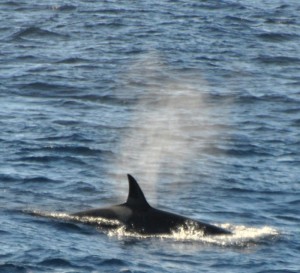 |
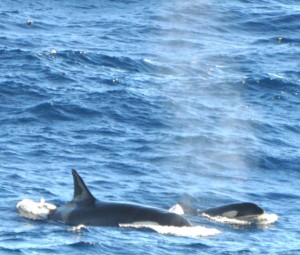 |
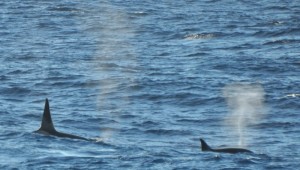 |
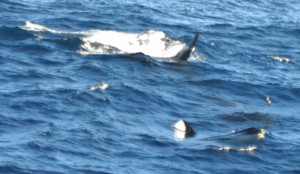 |
At 10am, Victory gives a lecture on Shackleton’s life and the Endurance Expedition – the most famous story of Antarctic survival. (Information on this expedition can be found in Island-hopping RTW2015 (4)).
Around 3pm, I hear an announcement on Fin whales and rush to the deck. As we have excellent weather, Jan cancels the afternoon lecture so that we can enjoy fresh air and the splendid scenery on deck or from the bridge. Later several pods of Orca, Southern Bottlenose whales, Southern Right Whales (animals that barely reach these latitudes) in addition to more Fin whales appear. I see their fins above the water but can hardly tell which except type of whales except the Orca, Humpback and Minke whales.
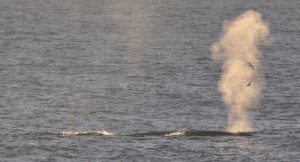 |
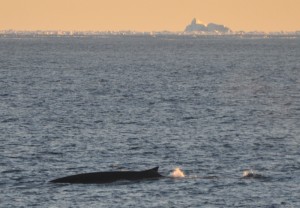 |
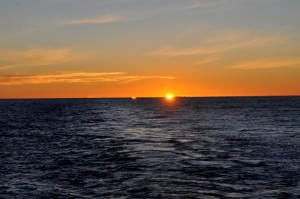 |
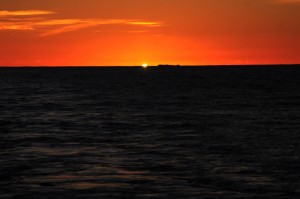 |
At the recap session, Jan briefs us on landing the next day at Argentina’s Orcadas Station at Laurie Island. After dinner, I watch ‘Jimmy’s Hall‘ a real story on an Irish man, Jimmy who was forced to leave Ireland owing to his political thinking, and role as an activist. He died in the US in 1950s. (L-pork neck; D- beef)
Day 6 (March 29, Sunday): Laurie Island, South Orkney Islands – Noon GPS position 60° 45’ S / 044° 43’ W; Weather -1°C, sunny; Wind NNW6; Sea 4; 3rd Landing – Orcadas Station; 1 lecture; 560nm to South Sandwich Islands
A gorgeous day with icebergs, a landing, penguins and whales! Our ship is approaching Laurie Island when I look out of my pothole at 7am. I hurry to the deck to find numerous large and beautiful tabular icebergs. I watch a beautiful sunrise and am delighted to see snow-covered mountains and glaciers on the island and deep blue Antarctic waters covered with fresh pancake ice and magnificent icebergs. It’s thrilling to watch numerous Chinstrip penguins jumping in and out of the water.
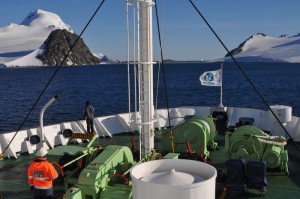 |
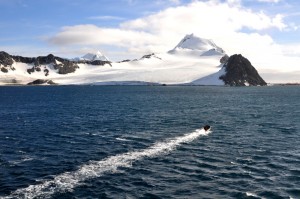 |
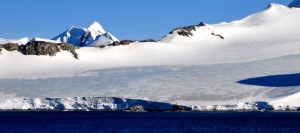 |
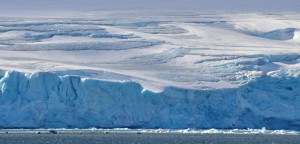 |
The Argentinean Station on Laurie Island is picturesque. Built on a narrow flat strip (possibly less than 500m wide) with beaches bounded by mountains and glaciers on both ends, it is the oldest weather station in Antarctic with an interesting history.
On March 25, 1903, ‘Scotia‘, the ship of the Scottish Antarctic Expedition led by Dr William S. Bruce was trapped and frozen to the ice here. The stranded men built a stone hut now known as the ‘Omond House‘ where the six men lived in the 20-square feet house till their ship was released the following spring. Dr Bruce who received no financial support or recognition from the British government, handed the station over to Argentina which has continued to keep weather records ever since. In the summer, the station is manned by less than 20 people while some 40 scientists winter over to carry out research work.
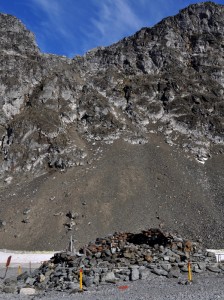 |
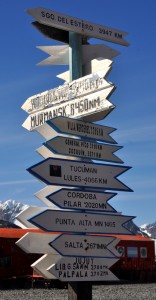 |
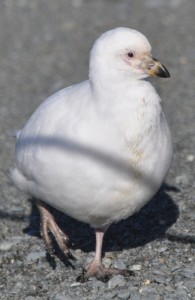 |
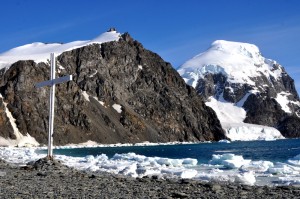 |
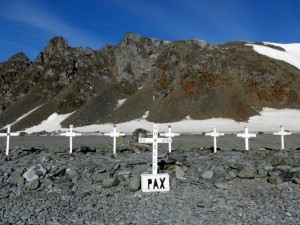 |
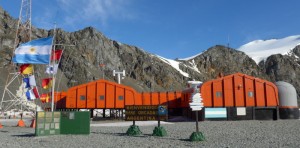 |
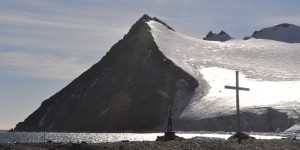 |
After breakfast, Jan tells us to get ready for a zodiac cruise before landing for a guided tour. But the station staff have other plans: we should come in three groups on a guided tour and cannot roam on our own. Instead of a cruise, my zodiac has to go straight to the beach for the first tour.
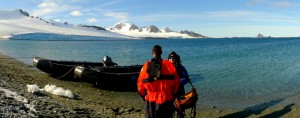 |
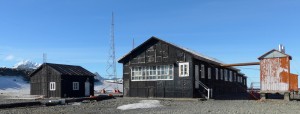 |
The first stop is the Omond House right by the landing site. Then we walk across the flat strip to visit a cemetery with nine memorial crosses in memory of the persons who had died on the island. A park ranger is stationed here to take visitors around. I would like to take his job! Our final stop is the common room where we are served with tea and biscuits. Some passengers hungry for shopping are eager to buy postcards and souvenirs while others line up for a passport stamp.
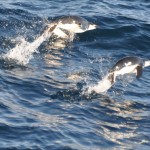 |
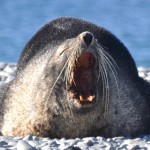 |
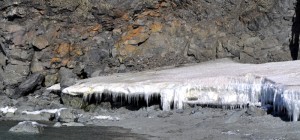 |
At the end of the guided tour, I am back at the landing beach and watch Chinstrap and Gentoo penguins, a couple of sheathbills, South Polar skuas and Antarctic fur seals. The pristine landscape in a gorgeous day is charming and photogenic.
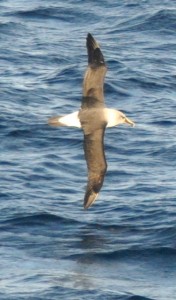 |
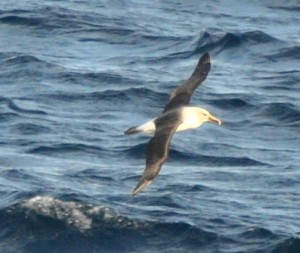 |
 |
I look forward to a zodiac cruise to explore the bay. But there is no more zodiac cruise. What has happened? I therefore return to the ship around noon only to discover that the third group has just commenced their guided tour. I should have stayed on the beach enjoying the scenery and fresh air and taken the last zodiac back with this group.

The weather is excellent: people stay on deck or at the bridge in the afternoon. Brent’s talk on ‘Penguin Research on the Antarctic Peninsula’ is therefore postponed to 4:30pm. I must be very tired and doze off during the lecture.
 |
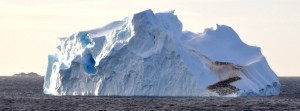 |
In the evening, I watch a BBC documentary on ‘Ice and Mankind‘ which tells how the Ice Ages have shaped our modern landscape and influenced the evolution of humans. (L-beef goulash & pasta; D- pork & rice)


